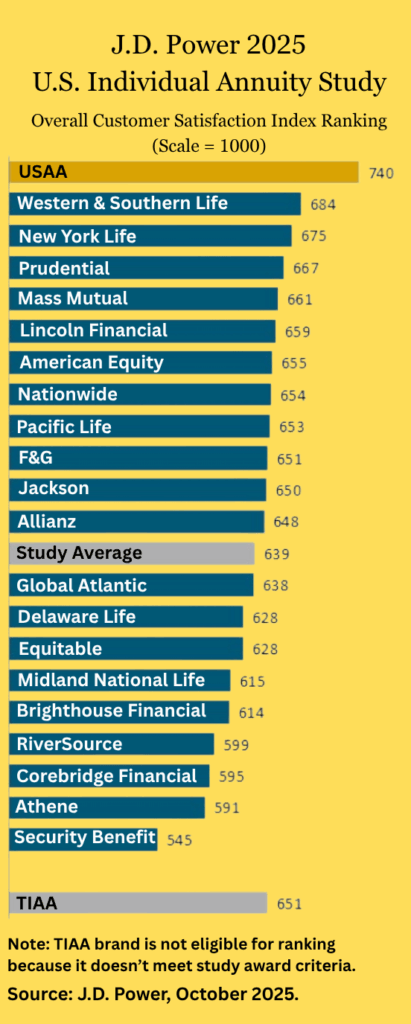
RIJ reviews five retirement-related research papers this week:
- “Mindful Economics: The Production, Consumption, and Value of Beliefs,” by Roland Benabou and Jean Tirole.
- “Economic Conditions and Mortality: Evidence from 200 Years of Data,” by David Cutler, Wei Huang and Andriana Lleras-Muney.
- “The Impact of Intergenerational Transfers on Household Wealth Inequality in Japan and the United States,” by Yoko Niimi and Charles Hokoida.
- “Older Women’s Labor Attachment, Retirement Planning and Household Debt,” by Annamaria Lusardi and Olivia Mitchell.
- “You Get What You Pay For: Guaranteed Returns in Retirement Savings Accounts,” by William Gale, David John and Bryan Kim.
The things we know aren’t always so
Economists once assumed, for the sake of convenience, that investors were “rational”—they knew what they were doing, minimized their risks and maximized their upside. This belief gave way to behavioral finance, which established that irrational quirks like the “endowment effect,” “loss aversion” and “hyperbolic discounting” are hard-wired into us.
Now comes another psychological spin on financial behavior: the concept of “motivated beliefs and reasoning.” In a new research paper, a Princeton economist argues that we subconsciously deceive ourselves in ways that we think will further our goals, in both our financial and political lives and often regardless of our intelligence level.
“Beliefs often fulfill important psychological and functional needs of the individual, write Roland Benabou of Princeton and his co-author, Jean Tirole, chairman of the Toulouse School of Economics. “Economically relevant examples include confidence in ones’ abilities, moral self-esteem, hope and anxiety reduction, social identity, political ideology and religious faith.”
That very idea invites denial, if not umbrage, and the authors acknowledge that it’s scary. “When motivated thinking becomes a social phenomenon… [c]ollectively shared belief distortions may amplify each other… so that entire firms, institutions, and polities end up locked in denial of unpleasant realities and blind to major risks,” they write in “Mindful Economics: The Production, Consumption and Value of Beliefs” (Journal of Economic Perspectives, Summer 2016).
How does the motivated-beliefs phenomenon manifest itself? Mainly through the kind of everyday self-serving self-deceptions that we’re all familiar with: Overconfidence, denial of bad news, wishful thinking, and so-called group-think.
Denial, as the character Stuart Smalley said to Michael Jordan on Saturday Night Live, is not just a river in Egypt. It’s both widespread and pernicious.
“The more people fail to attend to bad news and continue doing ‘business as usual,’ the worse the bad state becomes, making it even harder to face the impending disaster,” the authors write. Overconfidence and denial can be contagious in an organization. “In a hierarchy,” they note, “top management’s (mis)perceptions of market prospects, legal liabilities, or odds of victory will tend to trickle down to middle echelons, and from there on to workers or troops.”
Beliefs can be especially susceptible to the influence of incentives. “Each individual tends to align their beliefs with the fixed stakes they have in different states of the world.” (Or, as Upton Sinclair wrote, “It is difficult to get a man to understand something when his salary depends on his not understanding it.”)
Market timing: Be a teen in boom times
The go-go 1960s were a paradise for teenagers. Food was plentiful if industrial (Wonder bread, Hawaiian Punch, Jello, Mrs. Paul’s fish sticks and American cheese). Everyone seemed to drive a Mustang or a VW. The Beatles and Motown ruled AM radio. Steel mills and chemical plants belched smoke and fumes, but no cared.
Here’s more good news for anyone whose adolescence happens to coincide with an economic boom. They are relatively more likely to lead longer, more satisfying than people who come of age during bad times, according to economists David M. Cutler and Wei Huang of Harvard and Adriana Lleras-Muney of UCLA.
“In the long run good economic conditions in adolescence have a particularly long lasting effect on lifetime incomes and appear to improve health substantially by providing individuals with more satisfying lives, better social conditions and improved mental health and cognitive capabilities,” they write in a new paper, “Economic Conditions and Mortality: Evidence from 200 Years of Data.” The findings were based on the economists’ analysis of mortality and GDP experience in 32 countries, much it from the Human Mortality Database (www.mortality.org).
Boom-times do bring more pollution—just ask the Chinese—which harms health. And boom-era adolescents are statistically more likely to afford and use alcohol and cigarettes, which also raises mortality. But those adverse effects appear to be outweighed by the health and social benefits of being ages 16 to 25 during prosperous times.
Other factors, such as whether people lived in urban or agricultural areas, or whether their country spent a lot on social services, were considered. The agricultural areas experienced fewer pollution-related affects, and there was less of a boom-bust effect on mortality in countries where the socials spending was high during economic busts.
The family way: Estate tax policy and inequality
Estate taxes are relatively mild in the U.S.; they apply only to the few estates (one in 500) worth over $5.25 million. At the same time, the rise in wealth inequality in the U.S., where government figures show that three percent of households own 54% of the wealth and the top 10% owns 75%, makes sociologists fret about the future of the bottom 90%. New evidence shows that if we want low estate taxes, we should expect more inequality.
That’s because “intergenerational transfers”—bequests and gifts within wealthy families—tend to foster inequality. Two researchers at Japan’s Asian Growth Research Institute, Yoko Niimi and Charles Horioka, have studied the matter, and found that wealthy people are more likely to leave bequests, that children who receive inheritances are likelier to leave money to their children, and that these habits promote wealth concentration over time. The effect is weaker in Japan than in the U.S., because of more stringent estate taxes.
One surprising finding: Poorer people who received gifts from parents were more likely to give money to their children than were wealthier people in the same circumstances. As an explanation, the researchers speculated that the pass-it-along ethic may be more evident among poorer individuals simply because they can’t afford to leave legacies to their children unless they themselves have received bequests from their parents.
Not so surprisingly, Niimi and Horioka found that “those who receive intergenerational transfers from their parents tend to come from better-off families and that wealthier individuals are more likely to leave bequests to their children than less wealthy ones.” People are also more likely to receive intergenerational transfers if they have relatively highly educated parents or fewer siblings.
Sharp differences were evident between Japan and the U.S. with respect to estate taxes, bequest activity and wealth inequality. Americans are twice as likely to plan to leave bequests as Japanese, by 54% to 24%, and Japanese are more likely not to make special efforts to leave bequests but leave whatever they don’t use to their children, by 49% to 31%.
Tax policy helps explain those differences. The minimum taxable bequest in the US as of 2016 is $5.45 million US dollars, more than 10 times the Japanese figure. The tax rate of the bequest tax is also much higher in Japan (a maximum rate of 55% in Japan vs. 40% in the US). As a result, one in every 25 Japanese (4%) are liable for bequest taxes at death while only one in 500 Americans (0.2%) are.
Mortgage slavery: Housing debt keeps some women working 9-to-5
During the housing boom that preceded the Great Financial Crisis, many people were able to buy big homes with low down payments and large mortgages. There’s evidence that the burden of those big mortgages is forcing a significant number of older women to delay retirement, relative to women of 25 years ago.
In a new research paper, “Older Women’s Labor Market Attachment, Retirement Planning, and Household Debt” (NBER Working Paper 22606), Annamaria Lusardi of George Washington University and Olivia Mitchell of the University of Pennsylvania examine the upward trend of workforce participation by older women and its causes.
“Recent cohorts of women drawing near to retirement have more debt than before, and this is positively associated with older women being more likely to work currently, as well as to plan to continue to work in the future,” they write. Compared to women 25 years ago, more women ages 51 to 56 and 57 to 61 are working.
Lusardi is an internationally known expert on financial literacy. Mitchell is director of the Pension Research Council at the University of Pennsylvania’s Wharton School of Business.
Debt was the primary cause, they found. “Significant factors included education, marital disruption, health, and fewer children than prior cohorts. Yet household finances also appeared to be playing a key role, in that older women today have more debt than previously, and they are more financially fragile than in the past,” the paper said.
Of the debt load, much of it was linked to mortgages. “A standard deviation increase in the ratio of mortgage debt to home value was associated with a 3.4–5.5% rise in women’s anticipated probability of working at age 65. In large part this can be attributed to having taken on larger residential mortgages due to the run-up in housing prices over time and decline in required down payments.”
The price of a guaranteed investment return
The 2008 market crash traumatized a lot of people by halving the market value of their retirement savings almost overnight. “This experience, coupled with continuing concerns about retirement security, has generated new interest in the idea of having the government provide minimum rate-of-return guarantees for retirement savings accounts,” write William Gale, David John and Bryan Kim in a new Brookings Institution Economics Study.
The three authors try to calculate the cost of providing such a guarantee. It depends on the richness of the guarantee, the level of equities in the underlying portfolio, the time horizon of the guarantee, and whether it’s nominal or inflation-adjusted. It also depends on whether the guarantee is financed by insurance premiums, the government, a reserve “smoothing” fund, or a “collar” that puts both a cap and a floor on potential returns.
Of the few existing examples of guaranteed-return funds, the paper points to stable value funds and to TIAA’s “traditional annuity,” which offers a guaranteed minimum rate of return that’s reset annually and is accompanied by, in every year since 1948, by an annual bonus.
Among defined contribution plans with exposure to both stocks and bonds, Belgium offers a savings program that returns at least 3.75% for employee contributions and 3.25% for employer contributions, while the National Provident Fund in New Zealand offers a guaranteed 4% nominal return.
There’s a reason why you don’t see more of the pooled-risk defined contribution plans in the US: Our pension law, i.e, ERISA, discourages them. (TIAA’s annuity is not subject to ERISA.) Written before the advent of DC plans, ERISA “requires all investment returns be used solely for the benefit of pension participants, with reasonable allowance to defray administrative costs,” the authors write. Ergo, no ERISA plan can operating a reserve fund that would stockpile excess returns in good years and use them to protect the guarantee in bad years.
Gale and Kim (both of Brookings) and John (of AARP, and a co-creator with Mark Iwry of the “auto-IRA”) reach a conclusion that many life insurance company actuaries might reach instantly: Even modest capital market guarantees don’t come cheap, regardless of whether the guarantor, the owner or some governmental body absorbs the cost. “A private insurer would likely charge the economic cost to offer a guarantee,” they write. “The government may not, for political reasons, but that does not make the economic costs disappear.”
© 2016 RIJ Publishing LLC. All rights reserved.










